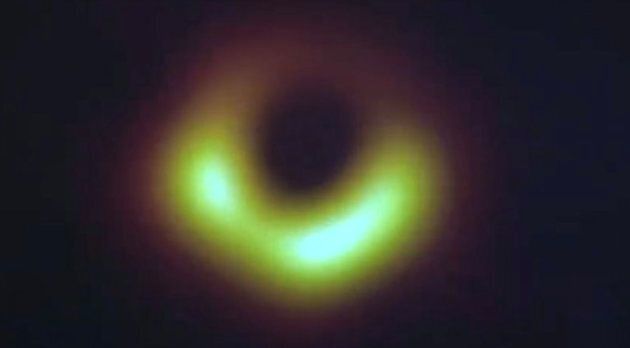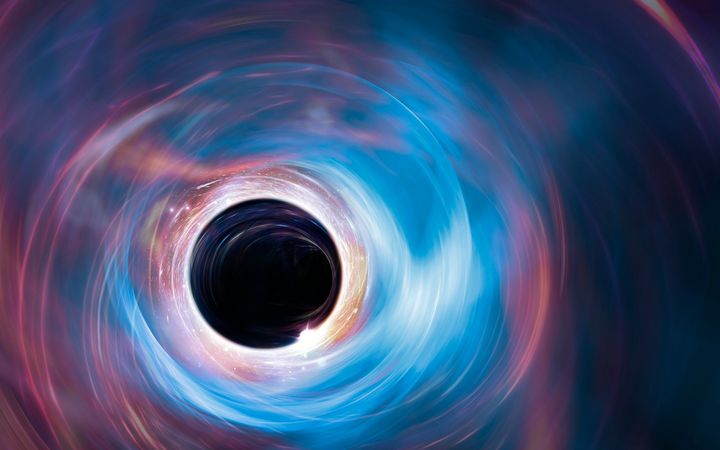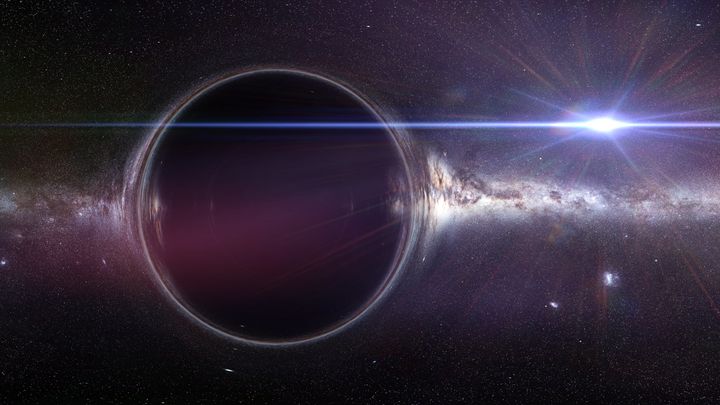In an astronomical first, an international team of scientists collaborating at an institute in Ontario has unveiled the very first close-up images of a monster black hole.
The discovery provides a unique insight into the ruthless gravitational fields which remain impossible to see with the naked eye.
The unveiling of the findings from the Event Horizon Telescope program at the Perimeter Institute in Waterloo, Ont., is expected to help scientists link two apparently incompatible pillars of physics: Einstein's theory of general relativity and quantum mechanics.
To date, those involved with the highly-anticipated reveal have been tight-lipped, so nobody has known what to expect until this moment.

Astrophysicist Sheperd Doeleman, director of the Event Horizon Telescope, said in March: "It's a visionary project to take the first photograph of a black hole. We are a collaboration of over 200 people internationally."
That's right — until today, any image you may have come across depicting a black hole is actually a representation, not a real one.
To achieve this feat, eight radio telescopes around the world were pointed at two of the cosmic behemoths, one at the heart of our galaxy, the Milky Way, and another nearly 54 million light years away.
The devices created a virtual telescope as big as the Earth itself, and powerful enough to capture data from the colossal black holes. The network has been collectively labelled the Event Horizon Telescope.

The first results are being shown by the scientists after two years of acquiring and processing data from the telescope.
Media in major cities around the world — Brussels, Washington, Santiago, Shanghai, Taipei, Tokyo, and Lyngby in Denmark — have gathered for press conferences.
Here's what you need to know about the pioneering discovery.
What is being researched?
The researchers targeted two supermassive black holes.
The first — called Sagittarius A* — is situated at the centre of our own Milky Way galaxy, possessing 4 million times the mass of our sun and located 26,000 light years from Earth.
The second – called M87 – is at the centre of the neighbouring Virgo A galaxy, with a mass of 3.5 billion times that of the sun and located 54 million light-years away from Earth.
The EHT project was launched in 2012, and the first set of data was obtained from the collection of telescopes in April 2017.
The telescopes are located in Arizona and Hawaii in the US, as well as Mexico, Chile, Spain and Antarctica. Telescopes in France and Greenland were later added to the network.
What are black holes?

Black holes are regions where matter has been crushed by gravity to an infinitely small space where the normal laws of physics no longer apply.
Nothing can escape the gravitational vortex of a black hole — not even light.
They are formed when huge stars collapse at the end of their life cycle, and can be at least 20 times bigger than the sun.
Supermassive black holes, as the name suggests, are the largest kind and can be millions of times bigger than the sun. They can merge with other black holes and suck up matter and radiation.
It is this point-of-no-return precipice, called the Event Horizon, that astronomers have tried to observe for the first time.
Will we actually be able to see a black hole?
No, but the astronomers will reveal what the silhouette of one looks like. We will also be able to get an idea of what a black hole's "event horizon" looks like, i.e. the boundary at the point of no return.
This will help astronomers better understand the nature of them, and what happens to matter just before it gets sucked into the mysterious field.
Scientists will be expecting the shape and shadow of the black hole to match up to Einstein's theory.
"If we find it to be different than what the theory predicts, then we go back to square one and we say, 'Clearly, something is not exactly right'," project scientist Dimitrios Psaltis said.
Physicist and black hole expert Lia Medeiros, from the University of Arizona, told ScienceNews magazine: "If general relativity buckles at a black hole's boundary, it may point the way forward for theorists."
— Isabel Togoh, HuffPost U.K., with a file from HuffPost Canada